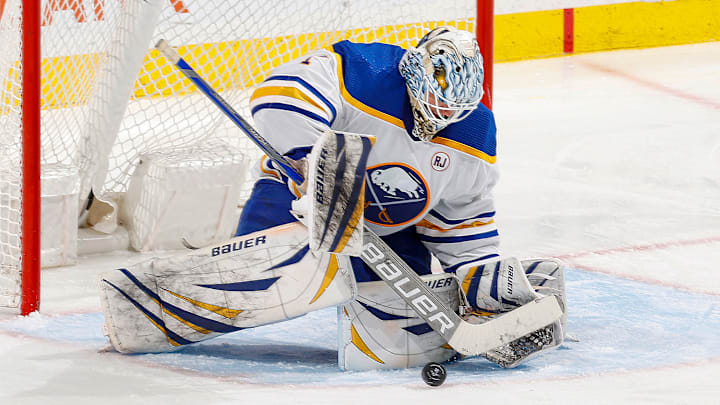6: Figuring out if any pending unrestricted free agents are worth keeping
There are five unrestricted free agents on the Sabres active roster per Cap Friendly, and none of them put up game-changing productivity. Okay, maybe you can make an exception for Zemgus Girgensons, who brings value not in the offensive zone but as a defensive-oriented forward.
As for the others, Kevyn Adams needs to weigh the benefits of keeping them to that of letting them walk in free agency and signing, or better yet, calling up others, but there isn’t much to go on.
Questions include: Are there better depth forwards out there than Tyson Jost, Victor Olofsson, and Eric Robinson, as they pertain to making the Sabres better, whether in free agency or in the system? Should they keep Eric Comrie around strictly as organizational depth and give the 1B spot to Devon Levi, or does it make sense to bring in someone else? The latter is actually a question I will answer in the next section.
5: Sign a veteran goaltender or set the stage for Devon Levi
Devon Levi can step onto the NHL ice and give the Sabres at least a 0.900 save percentage and a 2.90 GAA in 2024-25. Not outstanding numbers, but better than what he gave them last season. He’s ready for the NHL, but would he be prepared to take on a consistent workload as a 1B goaltender?
In the ‘unreasonable’ piece, I mentioned Ilya Samsonov as a signing that would make sense should the Sabres want to keep Levi in Rochester for another year. But it could also create a potential goaltender controversy if Levi showed an inevitable jump in productivity while Samsonov failed to improve what was a strong second half of the 2023-24 season.
It would make zero sense in that case to go with a three-goaltender solution, even if, in foresight, bringing someone in like Samsonov would give Levi an avenue to stay in Rochester. Another bet then, could be to sign a goalie to push Levi, perhaps a netminder who is a cut above Eric Comrie. One who, once Levi plays just as well or surpasses them, should have no qualms about being placed on waivers.
